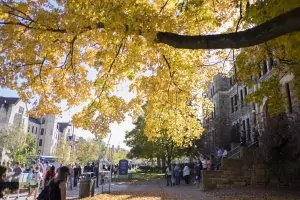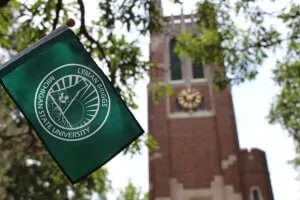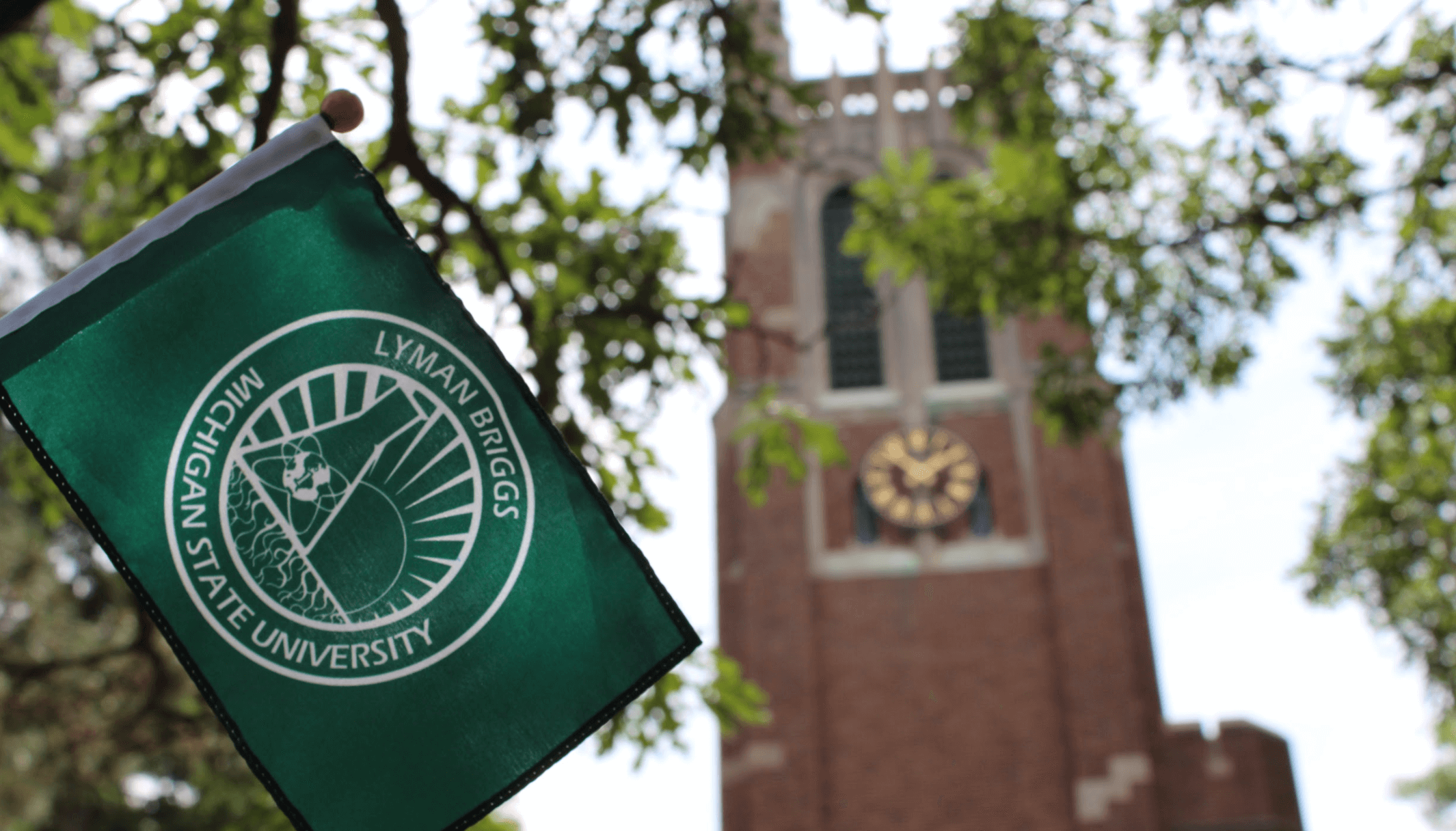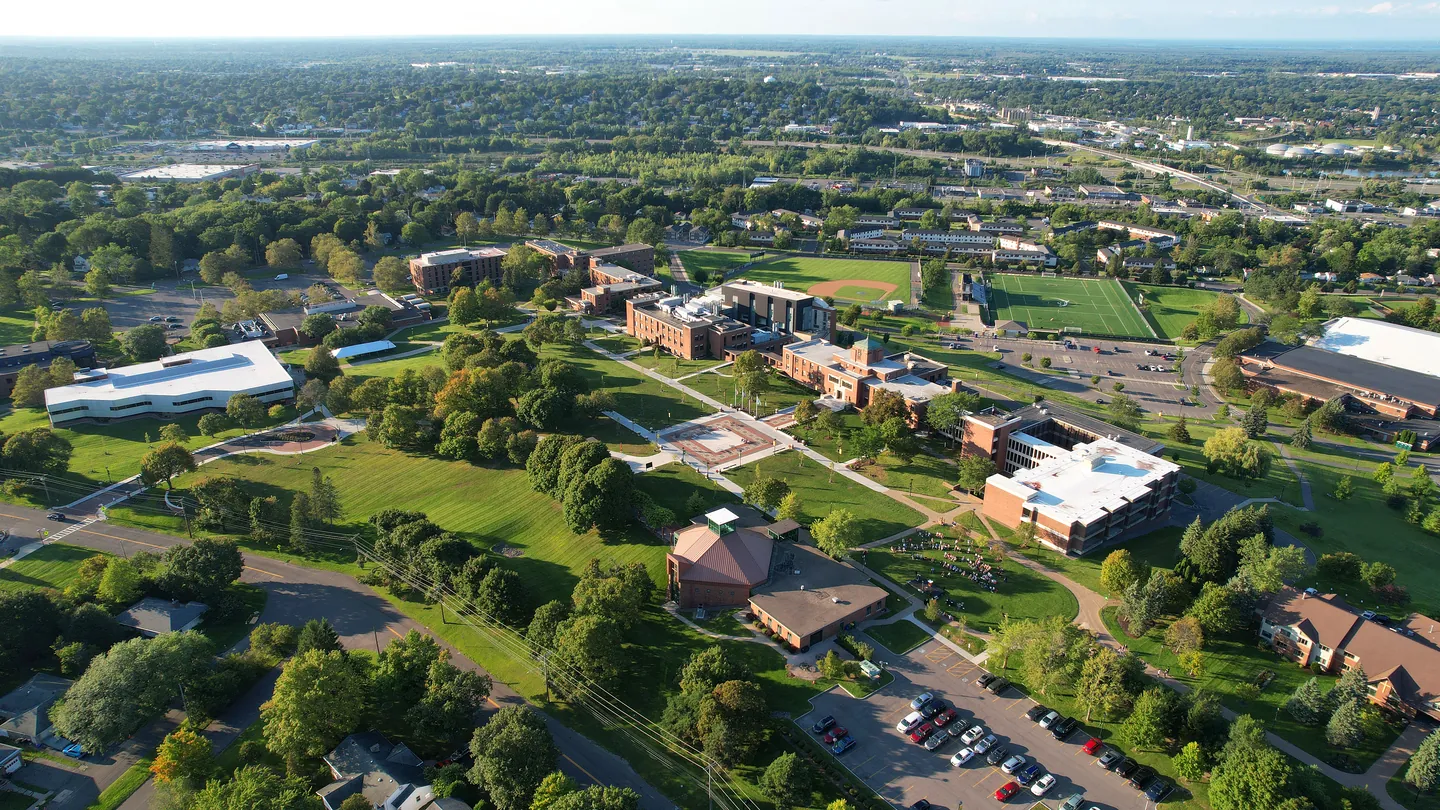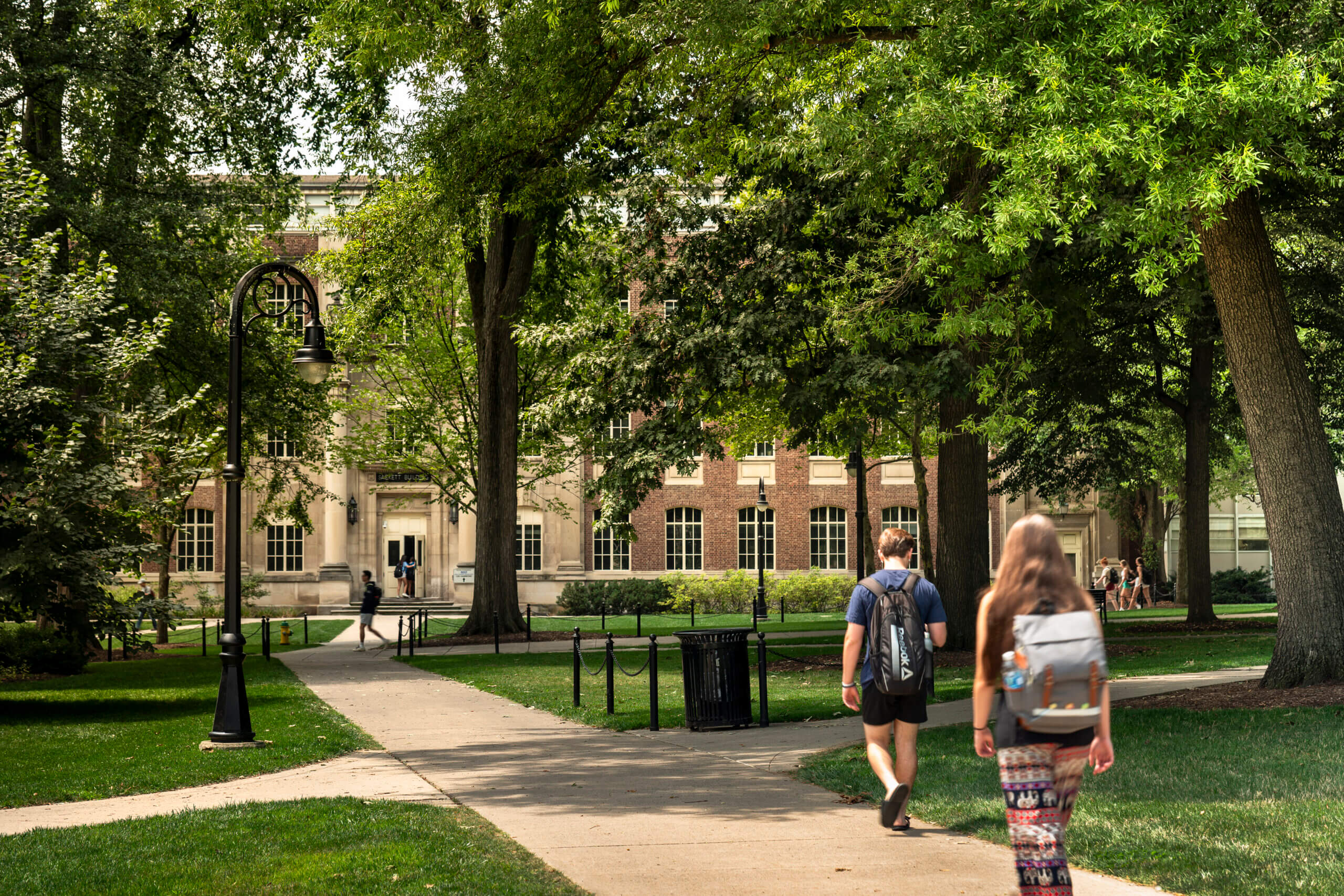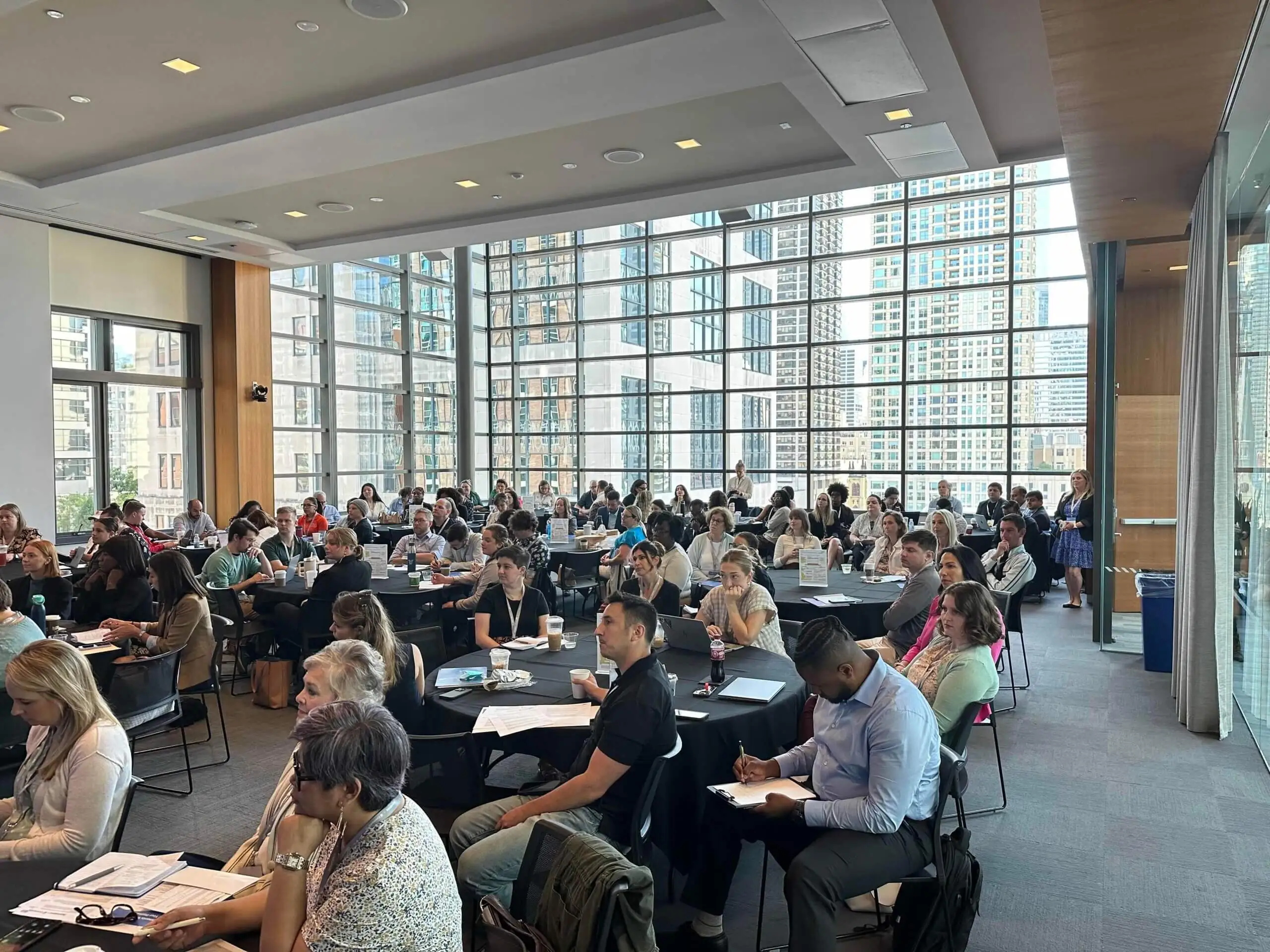The beginnings of Briggs Connect
Michigan State University, founded as a public land-grant university in 1855, sits just outside the state capital of Lansing. A top-ranked research university, nearly two-thirds of bachelor’s degree students go on to full-time employment, while a quarter of them seek to continue their education.
Lyman Briggs College is MSU’s science and mathematics residential college, with majors in biological, environmental, mathematical, computational, physical and social sciences. The majority of Lyman Briggs’ students (known as “Briggsies”) continue on to graduate studies to become health professionals, or to pursue research at the graduate or professional level. The college has also seen a recent increase in students interested in continuing their studies in public health and epidemiology.
In the summer of 2020, the dean of Lyman Briggs College championed the idea of starting a formal peer mentoring program especially designed for incoming first-year students. A thriving university-wide student-alumni flash mentoring program already existed, accessible to all Michigan State students. Which begged the question: What could be accomplished with a long-term, formal mentoring program—exclusively for math and science students?
Krysta Coleman, Career Consultant at Lyman Briggs College, was already familiar with MSU’s PeopleGrove platform, having worked closely with the Engagement Team in Lyman Briggs College to recruit alumni to the platform. She began work to launch their own hub of the PeopleGrove platform, now called Briggs Connect.
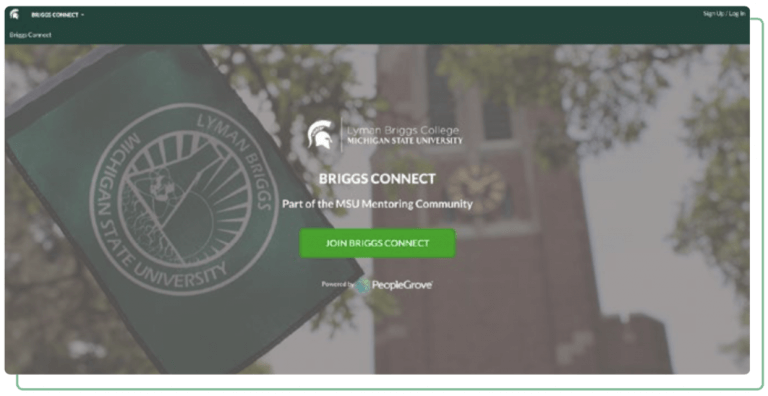
The login page for MSU Lyman Briggs platform
“When you think about how you make friends in college…you start by meeting students who share your major, but it’s also those people you meet through student organizations,” Krysta remarked. “And that’s something our first-year students really missed out on this year, due to the COVID-19 pandemic.” Lyman Briggs College sought to bridge that gap with its peer mentoring program.
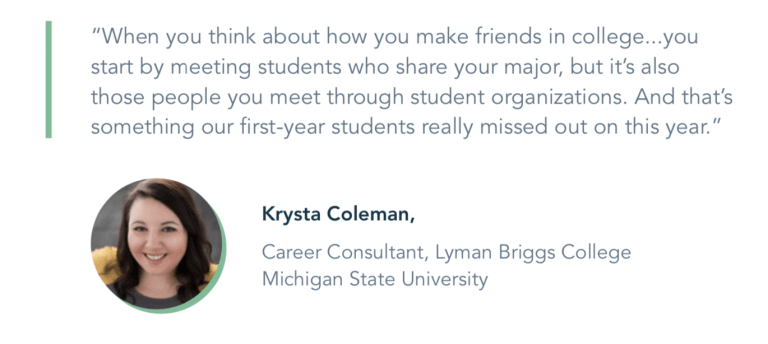
Multidimensional pairing
All first-year students at Lyman Briggs (approximately 600 incoming freshmen) were automatically brought on to the Briggs Connect platform. About 56 peer mentors participated, with each mentor responsible for 10-12 freshmen.
Krysta recalled the program’s early days, noting that their team could have easily taken shortcuts in getting mentors and mentees paired. “We could have just put everybody into an Excel spreadsheet and started randomly assigning folks,” she remarked. While tempting, Krysta knew that method wasn’t the best path forward. “We know that students who have something in common with their mentor are more likely to engage with the program and they get a lot more out of it,” she said.
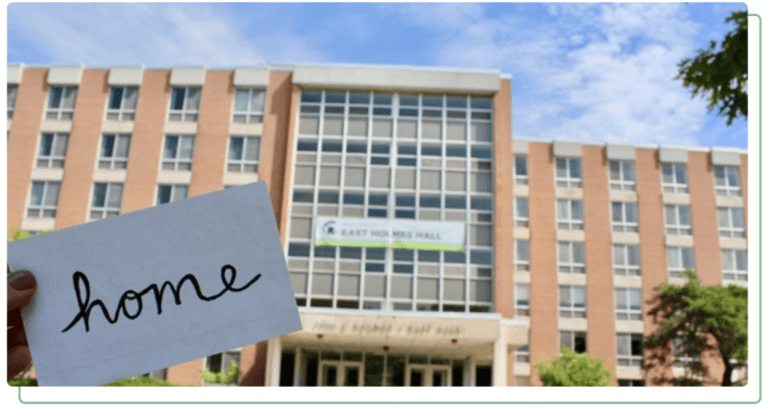
Holmes Hall, where all classrooms, laboratories and faculty/administrative offices for the Lyman Briggs College are located. Photo credit: Michigan State University
Lyman Briggs gave mentees the option to proactively select which upperclassmen they’d like to have as a mentor. Students were able to log into their PeopleGrove platform to “favorite” mentors they wanted to be paired with. The team then incorporated that factor when executing PeopleGrove’s bulk matching process. Other factors taken into consideration included students’ personal interests, activities outside the classroom, and areas of study. “What I really loved about the PeopleGrove platform was the opportunity to customize pairing and to really take into consideration students’ interests outside the classroom,” she said. “We really wanted to create those connections based on something more than just what they were studying in school.”
Krysta adjusted the matching algorithm to her liking, making tweaks to the weighting (to assign greater importance to certain factors).
“We often see students gravitate to people who look like them, which in a sciences college is really important,” Krysta observed. “There are a lot of underrepresented groups. I meet with women who want to find a mentor who looks like them and thinks like them. It’s the same for minoritized students.”
“What I really loved about the PeopleGrove platform was the opportunity to customize pairing and to really take into consideration students’ interests outside the classroom. We really wanted to create those connections based on something more than just what they were studying in school.”
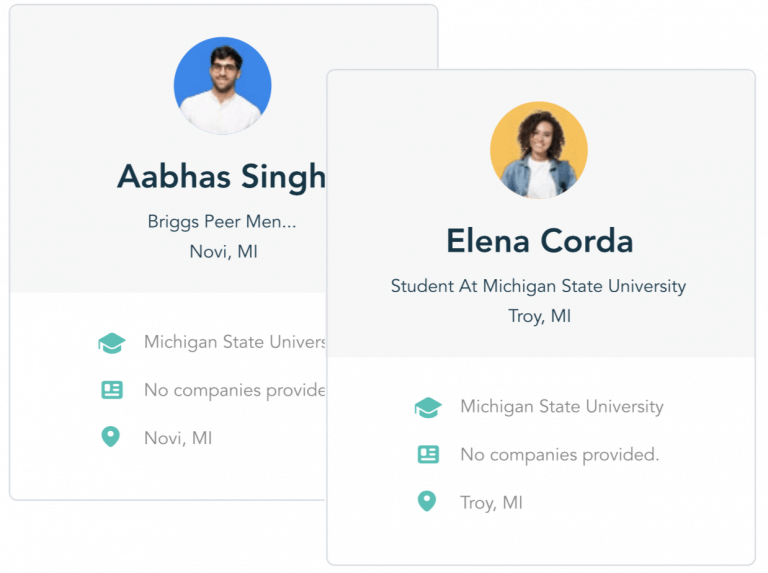
Lyman Briggs students logged into PeopleGrove to indicate which of their peers they’d like to be paired with for the duration of the formal mentoring program.
Once mentors and mentees were paired up, Krysta and team took advantage of setting program Goals in the PeopleGrove platform to keep participants on track throughout the semester. Goals can make mentorship programs more structured and help timid mentees and mentors have productive meetings. Participants see their goals in the platform, and a reminder email automatically fires when a goal is almost due.
Expanding program reach and scope with cross functional collaboration
Krysta has partnered with the Lyman Briggs Student Success and Advising Office, as well as faculty, to scale resources for the college’s peer mentoring program.
First-year students are mentored by upperclassmen, and those upperclassmen have access to student employees in the Advising Office who can provide them with support and resources and answer questions. Essentially, student employees act as liaison between the staff and students, which Krysta sees as a valuable enhancement to the overall program. As for working with faculty, “they’re going to be heavily involved in helping to train the mentors and the peer support leaders,” Krysta said. She also hopes faculty will help to spread the word about the program, and get it more entrenched in Briggsies’ everyday student life by way of incorporating it in the classroom and coursework.
The team at Lyman Briggs has taken their program outreach a step further, incorporating it into new student orientation at Lyman Briggs for the 2021-2022 academic year. Since orientation will be conducted virtually, peer support leaders will create promotional materials (such as video) to integrate into online orientation modules. Students will also get prompts to create their Briggs Connect profile during orientation.

Krysta believes that many colleges like MSU Lyman Briggs struggle to get the resources they need for a program such as theirs. However, she’s seen something positive emerge from that particular challenge: increased collaboration, with staff and departments banding together to overcome constraints.
“Something that happens, particularly in small colleges, is that we’re forced to rely on each other a little bit more, which makes what’s happening in Briggs right now with the peer mentoring program so exciting. We’re creating opportunities and opening doors for our students, and that’s what really is important to remember at the end of the day, when we’re trying to form those collaborative partnerships.”
Looking ahead
“We’ve only just completed our first year with this program, and the response we’ve heard from students is overwhelmingly positive,” said Krysta. “They’ve told us via surveys and conversations that they just feel more connected to the college and to their peers. So we’re already gearing up for some exciting new additions and changes in the second year.”
She continued: “It’s worth it for us to invest in this platform and in the success of our students. The applications that PeopleGrove offers to customize the student experience is really special. It opens up the door for so many opportunities.”
